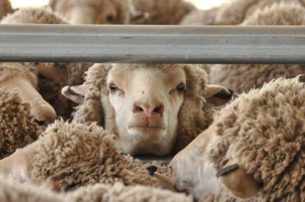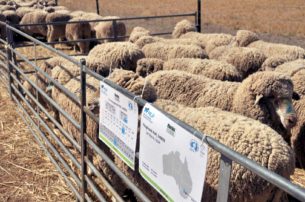Over the life of the project, 135 industry representative sires will each be joined by artificial insemination to 90 ewes in order to generate 5,000 F1 ewes. The repeat use of sires across sites and years will ensure sufficient linkage to allow data to be analysed within each site, across sites and in combination with other industry databases such as MERINOSELECT.
Broadly the sire selection criteria involved ensuring that a diverse range of sires were selected to ensure the relationship between reproduction, growth, carcass and fleece traits over a ewes lifetime is able to be assessed. The criteria were based on:
- Industry representative:
Involvement of horn/poll, Merino wool types, and sires with and without Australian Sheep Breeding Values (ASBVs). - Genetically representative:
Sires have been selected from the four main genetic performance groups (clusters) in the MERINOSELECT database to ensure a wide diversity of sires. The first cluster contains animals with an emphasis on increased fat and muscle and reduced worm egg counts, and often have slightly lower wool performance. The second cluster are high performers across industry indexes, the third are primarily wool focused and the fourth involves animals that fall outside the original three groups. Selection was balanced between the first of the three groups with some representation from the fourth. - Fleece trait value and predicted change:
Predicted to maintain, increase or decrease fleece value over time. - Performance range:
High and low performance for traits based on percentile band tables. - Sire Age:
A balance of young (progeny yet to be evaluated) and older rams. - Impact rams:
Sires that have performed well in the Show Ring, sires with high semen sales (both with or without ASBVs) and sires with high ASBV index values.



